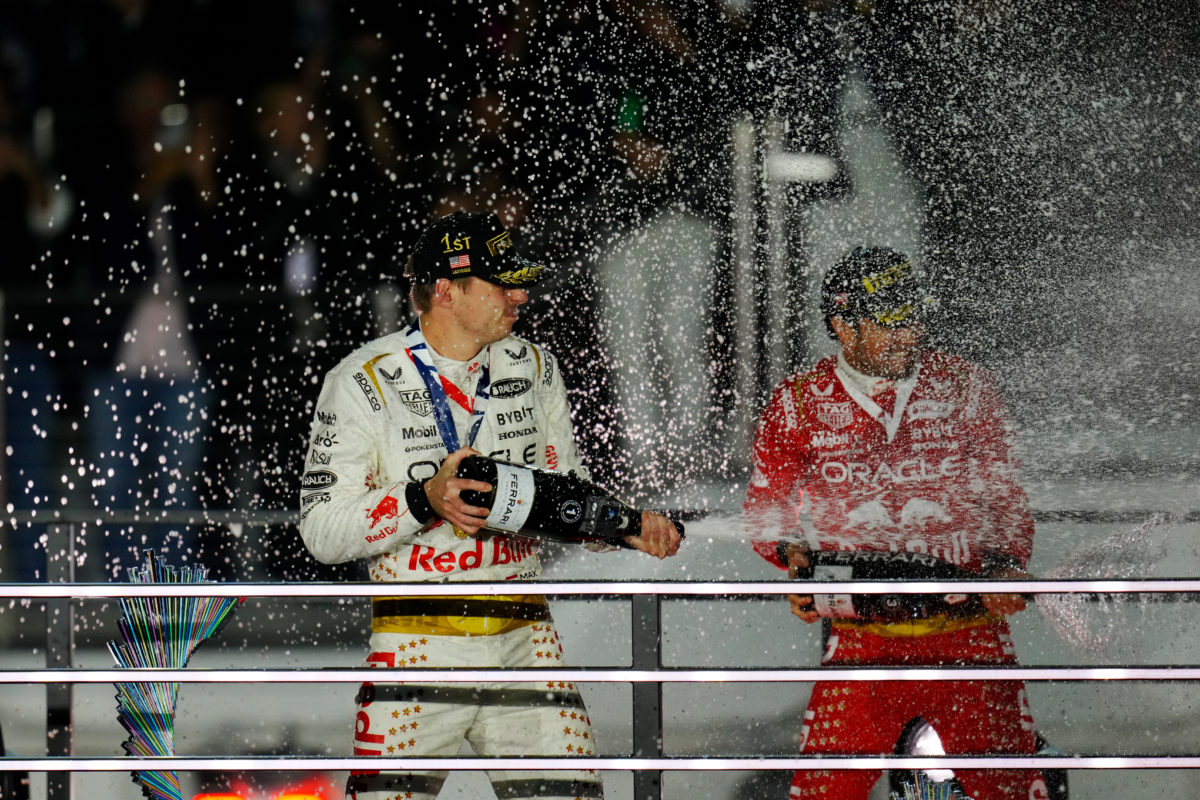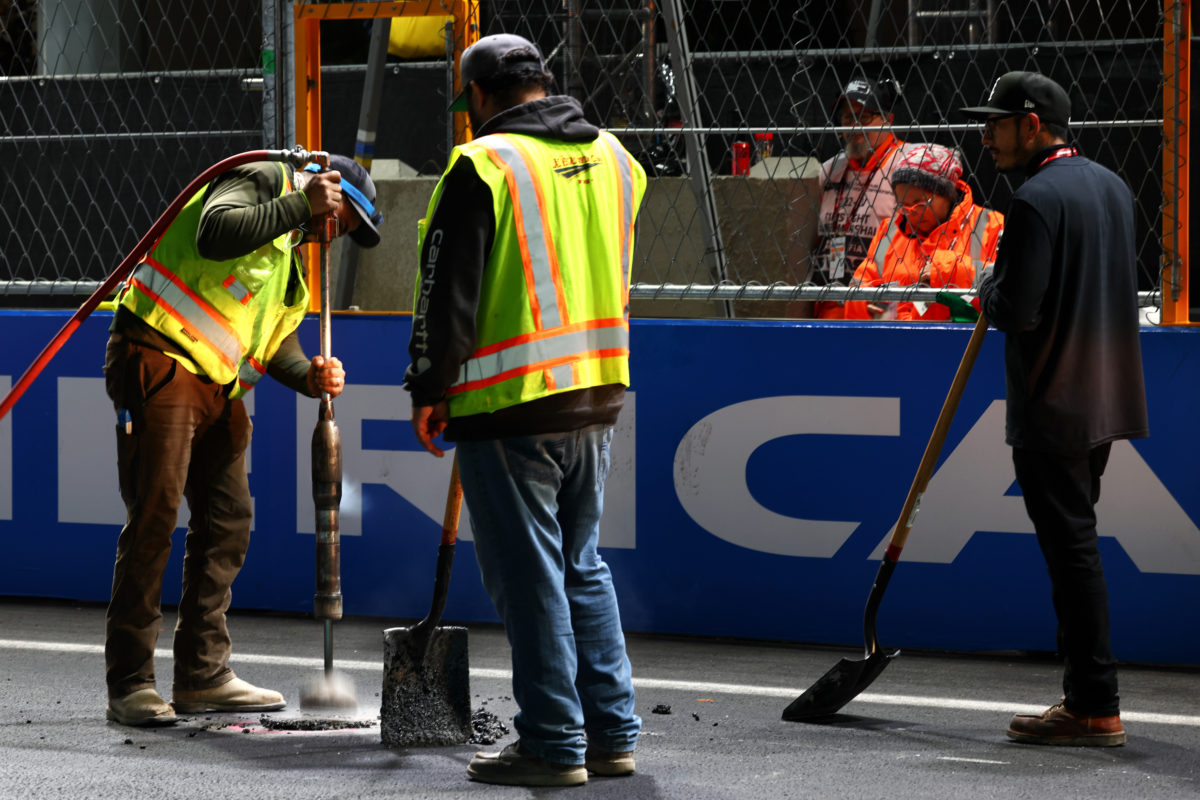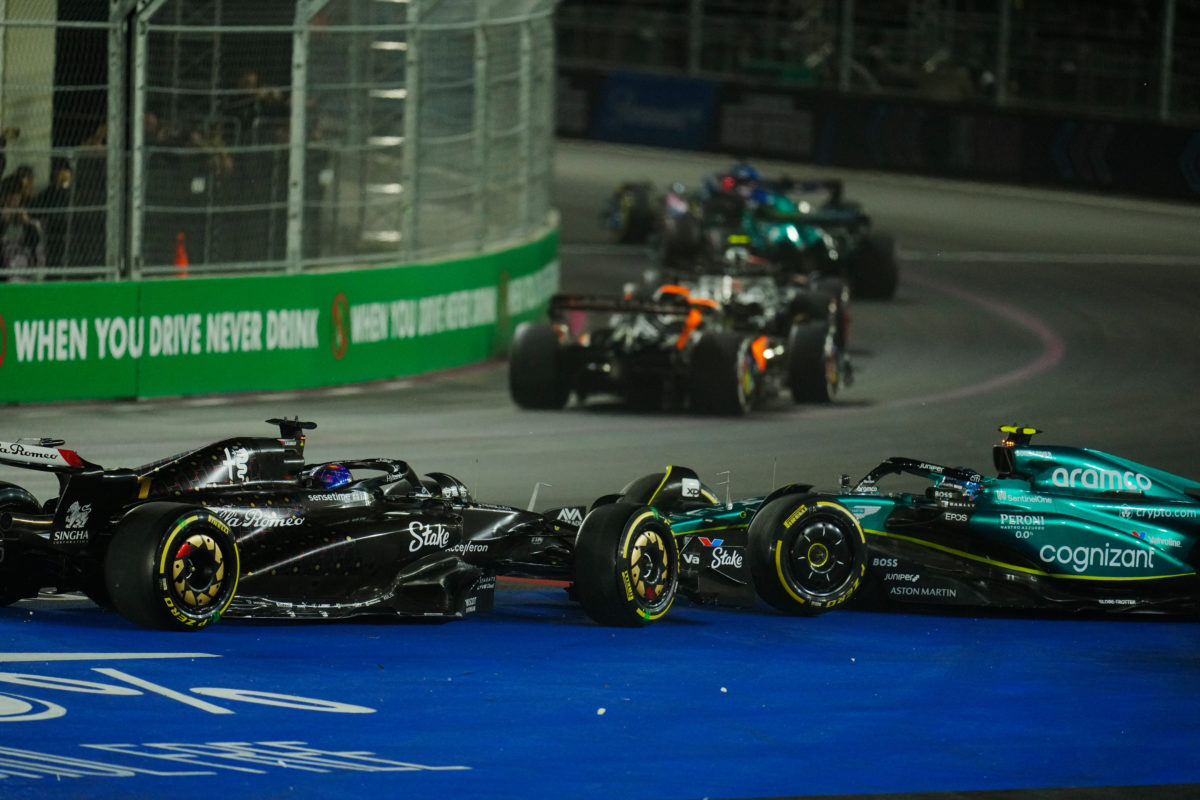

When Max Verstappen took the chequered flag for the 18th time in the most dominant season in F1 history, the sigh of relief from all associated with the sport was palpable.
Less than 48 hours earlier, F1 was in the spotlight for all the wrong reasons, its burgeoning reputation in the eyes of a new-found, long-desired American public, close to crumbling after years of trying to prove itself to a previously reluctant audience.
Max Verstappen had stuck the knife in the day previously, the sport’s three-time champion deriding everything associated with the Las Vegas Grand Prix as “99 percent show, one percent sporting event“.
At an elaborate opening ceremony along the start-finish straight, Verstappen would have felt justified in his remark as all 20 drivers were introduced to a packed main grandstand by being elevated via a dias onto makeshift stages – not once, but twice – smiling and waving politely.
This was F1 Vegas-style, anathema to a racing puritan such as Verstappen who lives for the thrill of a racetrack, rather than the expected Stateside razzmatazz that has fast taken hold of the sport since Liberty Media were handed the keys to the kingdom.
At a cost of half-a-billion dollars, the Las Vegas circuit built by F1 was front and centre. It did not need one of its statesmen to criticise before a wheel had turned around its simplistic circuit that at least took in Vegas’ iconic sights.
What then unfolded late on Thursday evening, and into the early hours of Friday morning, was F1’s worst fears realised.
Just eight minutes into first practice, the Ferrari of Carlos Sainz sustained severe damage after he had driven over a water valve cover, the concrete seal of which exploded with the suction forces generated by his SF23.

Initially delay turned into cancellation, which became an arduous repair operation that resulted in FP2 starting two-and-a-half hours later than scheduled, worse still in front of empty grandstands as fans had been forced to leave due to America’s union labour laws requiring all support staff to down tools.
In between, Mercedes team principal Toto Wolff had vented his anger at a journalist in an FIA-organised press conference, using an expletive at one point such was his ire.
It was an opening day/night from hell for F1 CEO Stefano Domenicali, Las Vegas GP CEO Renee Wilm, and Liberty Meda CEO Greg Maffei.
The last thing they needed was for the grand prix to turn into a damp squib and have America become disenchanted with the racing spectacle, as has often been the case in the past.
An additional problem was that under the lights, and with the circuit naturally lined by concrete barriers, the ground-level television shots meant F1 could have been racing around any street track anywhere in the world.
There were no reference points, no markers to identify it as Las Vegas. It was only via the helicopter shots that you grasped this was Sin City, resplendent with the brash neon that has long earmarked it as a venue for F1 to crack.
Even after qualifying, the jury – namely the 20 drivers – was out. Some suggested the circuit would definitely aid overtaking, others more sceptical given the cooler conditions and on a low-grip track.
A saving grace was that graining of Pirelli’s tyres was prevalent, the rubber quickly falling away, so providing ammunition for those behind to pass.
When the race started, Domenicali, Wilm, and Maffei must have had their fingers crossed that after a problematic build-up, everything would be alright on the night. So it proved, and then some.
Yes, the track may lack character, and is hardly a challenge for a modern F1 car and for those at the wheel, but with such simplicity came a spectacle that produced one of the best – if not the best – races of the season.
From Fernando Alonso’s opening-corner spin, to Charles Leclerc’s move on Sergio Perez late on the final lap to finish second to Verstappen, you could barely take your eyes off what unfolded in between.

The lead changed hands on five occasions as Verstappen, Leclerc and Perez fought for victory, whilst behind them the action was just as fierce, with overtakes and incidents aplenty.
It was the type of race F1’s American audience demands, and the fans who will have felt short-changed after the events – or lack of it in part – earlier in the weekend, at least will have been given value for money, to a certain degree.
Some three-day packages cost tens of thousands of dollars as the hotels behind them looked to exploit the high rollers, the antithesis of a true F1 fan in the eyes of Verstappen.
For the average follower, being able to afford a trip to Las Vegas will simply be a bucket-list hope for the future as it remains to be seen whether F1 and its hotel backers will temper prices down the line.
After what unfolded on Saturday night, though, they will certainly feel they can again push the boat out when it comes to pricing, but there also has to be consideration for the bread-and-butter followers.
Top of the agenda for Domenicali et al, there also has to be scrutiny of the schedule. Red Bull team principal Christian Horner hit the nail on the head after the race when he said ‘everyone was leaving Vegas f***ed’.
The tiredness on the faces of all involved in the sport – drivers, engineers, mechanics, PR teams, and the media – was brutally evident, and understandable with many heading back to their hotels after a day’s work with the sun just beginning to rise.
With qualifying at midnight and the race at 10pm, F1 was trying to appease its core television audience in the UK and Europe, but you cannot please all the people all of the time.

Daniel Ricciardo, a long-time lover of everything Las Vegas, said it best with a plea to F1 to alter timings for next year for the health and safety of all.
Would F1’s European and UK television paymasters stomach broadcasting a race at 3am or 4am if the schedule is altered? Yes, it does so for Japan, but this is Vegas and all the visual glory that comes with it, and that is not to demean Suzuka in any way.
And after a race as captivating as the one just seen, they will be eager to further entrench their position to guarantee as strong an audience as possible for future years.
Additionally, support races are required to provide an added attraction for the fans throughout the day. When you are paying so much money for a ticket, you want value. Many will feel they did not get that, despite F1 delivering handsomely on the night.
In essence, following a very rocky start, F1’s blushes were spared, and it now has a flagship event all its own.
Monaco may have history on its side, and will always hold a special place in the heart of every F1 fan, but it can barely call itself a motor race these days given the procession that so often unfolds due to the confines of its narrow streets.
Las Vegas may be in its infancy, but it provided a racing spectacle that the Principality can only dream of. Move over Monaco because there is a new kid on the block.




















Discussion about this post